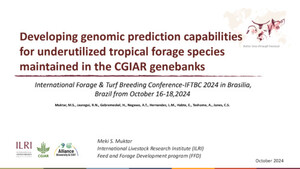
Competition for land resources: Driving forces and consequences in crop-livestock production systems of the Ethiopian highlands
Abstract
Introduction: Ethiopia has made efforts to tackle the challenges of low crop and livestock productivity and degradation of land resources through various rural development strategies. However, increasing demands for food, animal feed, fuel, and income-generating activities are putting pressure on the land. In this paper, we describe the production pressure and competition between crop and livestock production, quantify rates of land-use/cover (LULC) changes, and examine driving forces and consequences of land conversion. Methods: The study was conducted in Gudo Beret watershed, North Shewa Zone of Amhara region, Ethiopia. It used a combination of methods including remote sensing, household interviews, field observations, focus group discussions, and key informant interviews. Supervised and unsupervised image classification methods were employed to map LULC classes for 31 years (1984–2016). Results: The results of satellite remote sensing revealed that 51% of the land in the study area was subject to accelerated land conversions. The household survey results indicated that feed resources and grain production pressures were 1.43 and 1.34 t ha−1 respectively. The observed annual changes in plantation and settlement areas were 2.6% and 2.9%. This was mainly at the expense of bushland and grazing land systems. Cropland increased (0.4% year−1) while grazing land reduced (3.5% year−1) under contrasting dynamics and competitive changes. An increase in human and livestock populations and farm expansion were major drivers of land conversion that adversely affected household livelihoods and the natural ecosystem. The consequences of these pressures resulted in a lack of animal feed, low crop-livestock productivity, and a reduction in natural vegetation coverage. Conclusions: We suggest that sustainable land resource management, more integrated crop-livestock production, and the use of productivity-enhancing technologies could play a role in managing competition for land resources.
Citation
Mekuria, W., Mekonnen K., Thorne, P., Bezabih, M., Tamene, L. and Abera, W. 2018. Competition for land resources: Driving forces and consequences in crop-livestock production systems of the Ethiopian highlands. Ecological Processes 7:30.









